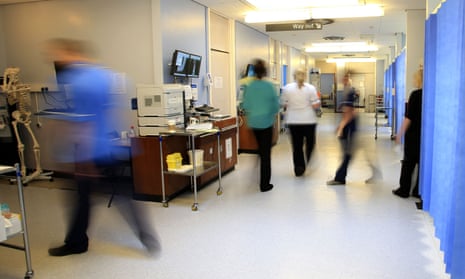More than two-fifths of national health spending in the UK is devoted to people over 65, according to estimates produced for the Guardian by the Nuffield Trust – a figure that is only likely to increase with the nation’s ageing demographic.
The data shows that an 85-year-old man costs the NHS about seven times more on average than a man in his late 30s. Health spending per person steeply increases after the age of 50, with people aged 85 and over costing the NHS an average of £7,000 a year. Spending on health services across all age groups is £2,069, according to Treasury analysis.
The costs pressures are unlikely to abate. By 2039, people aged 65 or over are expected to represent 23% of the population, or 17.5 million, according to projections from the Office for National Statistics. About one in 12 of the population will be aged 80 or over by then.
Currently, there are 11.4 million people aged 65 or over in Britain, representing 18% of the total population, up from 12% in 1966.
“People in the UK live longer every year because we have learned to cure or prevent many of the diseases that once cut lives short,” said Mark Dayan, policy analyst at the Nuffield Trust. “Today, the NHS’s staff and technology, and therefore its money, is increasingly focused on treating people in older age groups, with often long-term conditions that we struggle most with. That’s a sign of success.
“But it means that as more people stay alive and grow older, the cost of healthcare rises each year by 1 or 2% on top of wages and costly new drugs,” he added. “To maintain and improve the health service, we need to constantly find more money or savings, usually both. This basic question of demographics and money lies behind most of the controversies across the NHS.”
Average spending is higher for males until they reach 15 and once again after their mid-60s. Once they hit 80, men cost the NHS 8% more on average than women of the same age.
Newborns also incur higher costs to the health services. In England, the Institute for Fiscal Studies [pdf] estimates hospital costs for boys at £1,504 in the first year of life, compared with £1,254 for baby girls. Newborns account for about 8% of hospital inpatients a year.
There were 776,352 live births in the UK in 2014, equivalent to 2,127 a day.
Dealing with complications at birth generates additional costs, the most common being jaundice and disorders related to short gestation and low birth weight, both affecting 8% of newborns [pdf]. Failure to thrive – when the weight of a baby is insufficient – costs the NHS a minimum of £646 to treat.
Maternity plays a key part in explaining the cost difference between men and women in adult life. Hospital costs for women aged between 20 and 35 are at least twice those for men of the same age.
This increase in cost for women is partially offset by mental health spending, which is higher for men in their 20s and 30s.
The amount spent on health services varies between different parts of the UK. Expenditure is highest in Scotland, at £2,160 per person, and lowest in England at £2,057.
At a regional level, health spending was 23% higher in London than the England-wide average. The east, south-east and east Midlands recorded the lowest spending, with an average of less than £1,850 per person.
The data, which is based on identifiable expenditure (where the individuals who benefit from public spending can be located), shows that health spending per head is second only to social protection (£3,927), but ahead of education (£1,307), economic affairs (£582) and public order (£441).
Health is the service for which public expenditure has increased the most in the last 20 years. Treasury data shows that in real terms spending has more than doubled from £62.8bn in 1994-95 to £134.1bn in 2014-15. As a proportion of the nation’s GDP, health spending has increased from 5.2% to 7.3% in the same period.

Comments (…)
Sign in or create your Guardian account to join the discussion